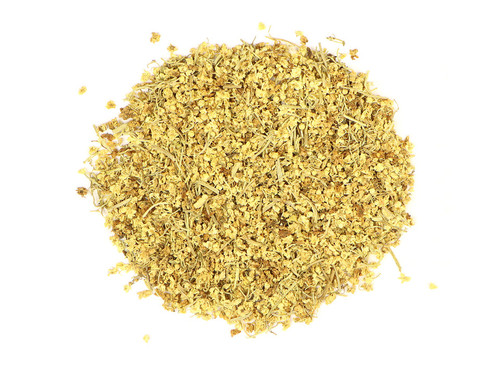Symphytum officinale, commonly known as comfrey, is an herbaceous perennial in the Boraginaceae family, native to Europe and temperate Asia, including the Caucasus, Kazakhstan, Siberia, and Turkey. Now naturalized worldwide, it thrives in damp, grassy soils and is often considered a weed in temperate northern latitudes. Part of the Symphytum genus with about 35 species, comfrey is related to borage and heliotrope. It features large, rough, hairy, lance-shaped leaves, a scorpioid inflorescence of bell-shaped whitish, pink, or purple flowers, and black roots. Pyrrolizidine alkaloid content, which varies by species and is higher in Russian comfrey (S. x uplandicum) and prickly comfrey (S. asperum), requires cautious use. Valued for thousands of years in traditional European and North American herbalism, comfrey is used in topical preparations.
Comfrey Leaf
Comfrey leaf, used since Roman times in traditional Western herbalism, is harvested, dried, and incorporated into salves, ointments, or infusions for external application. It is valued for its soothing effects on the skin, but careful selection of species and harvest time is essential due to potential pyrrolizidine alkaloid content.
Comfrey leaf, used since Roman times in traditional Western herbalism, is harvested, dried, and incorporated into salves, ointments, or infusions for external application. It is valued for its soothing effects on the skin, but careful selection of species and harvest time is essential due to potential pyrrolizidine alkaloid content.
Comfrey Root
Comfrey root has a long history in traditional European practices for its robust properties in topical preparations. The black roots are dried and used in ointments, salves, or infused oils for external application, requiring careful handling due to alkaloid content.
Comfrey root has a long history in traditional European practices for its robust properties in topical preparations. The black roots are dried and used in ointments, salves, or infused oils for external application, requiring careful handling due to alkaloid content.
Both comfrey leaf and root are used exclusively in topical preparations due to pyrrolizidine alkaloid concerns. The leaf is preferred for its soothing effects in lighter salves and ointments for general skin support. While the root, denser and considered more potent, is used in infused oils or thicker salves.
Leaf and Root Precautions
Not for internal use. Do not apply to broken or abraded skin. Do not use when nursing. We recommend that you consult with a qualified healthcare practitioner before using herbal products, particularly if you are pregnant, nursing, or on any medications.
Not for internal use. Do not apply to broken or abraded skin. Do not use when nursing. We recommend that you consult with a qualified healthcare practitioner before using herbal products, particularly if you are pregnant, nursing, or on any medications.
This information has not been evaluated by the Food and Drug Administration. This product is not intended to litchi, treat, cure, or prevent any disease. For educational purposes only.h











